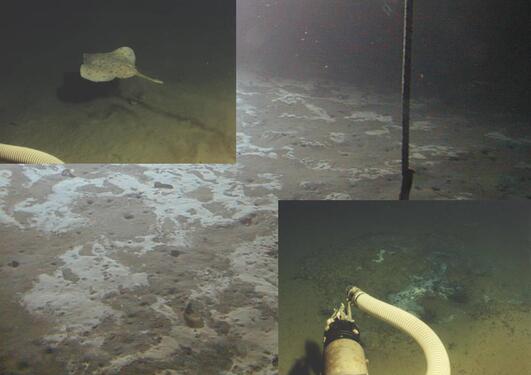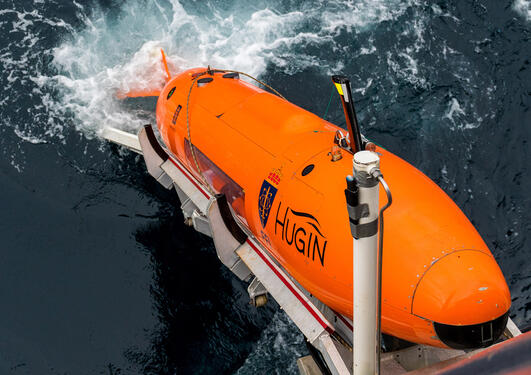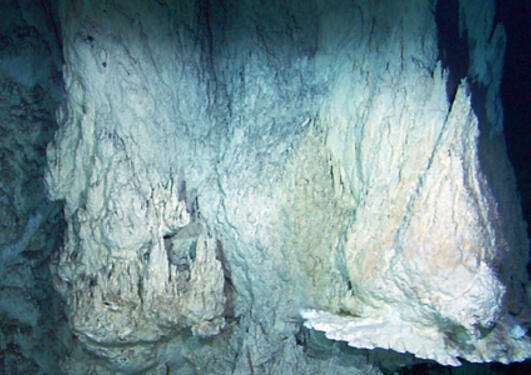Learn more
Summer 2010 CGB researchers continue working with cutting-edge technology in their search for new examples of arctic venting phenomena.
Main content
Researchers at CGB are utilising multi-disciplinary approaches to expand the frontiers of knowledge in biology, geology and geo-biology in the relatively unexplored deep sea along the arctic mid-ocean ridges.
In addition to the ROV, CTD and other tools that have been employed on the various summer cruises thus far, a Calypso corer and the Hugin AUV will be added to this summer’s palate of cutting-edge technology. (see short videos about CTDs and ROVs)
Information from the AUV and CTD will provide valuable insights into the chemistry and current movements of the water column – in particular searching for the chemical, particle and temperature signatures of a vent plume. In addition the AUV will augment the G.O.Sars sea floor mapping capacity to provide more detailed information about the dramatic topography around mid-ocean ridges.
By going nearly 20m into the sea floor sediments, the Calypso corer will greatly expand the information researchers have about the geological history of this area. A 20m core may represent several to many hundreds of thousands of years of sea floor history. (read about the shorter Gravity corer)
The arctic mid-ocean ridges are relatively unique in that they are located near, and in places have actually been subject to significant sedimentation from the various ice ages. For geologists, sediment cores provide a treasure trove of information about past geological activity: glacial, volcanic, venting etc.
Recently biologists have been becoming increasingly interested in sediment core information as providing unique opportunities to study the composition of the deep biosphere – how geological events and the resulting changes in sediment composition have led to differences in community structure.



